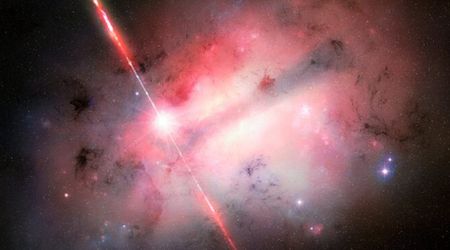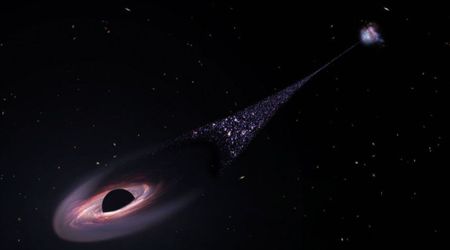Scientists at NASA convert space telescope data into a symphony using sonification

NASA has managed to capture the final whispers of stars by transforming the data from a dying star into sound. This fascinating process, called sonification, transforms data observed by a telescope and turns it into an audio, according to the recent Space.com article.

Scientists at NASA have converted recent space telescope data into cosmic soundscapes, turning the activity around the black hole into a symphony. With the help of NASA's Chandra X-ray Observatory, James Webb Space Telescope, and Imaging X-ray Polarimetry Explorer (IXPE), these sonifications were created. When musical notes are assigned to data, space observations can be transformed into sound, allowing people to "hear" the cosmos. Three new pieces of cosmic sound, associated with the densest and darkest members of our universe - black holes- were released by NASA on May 8.
WR124, a massive Wolf-Rayet star 28,000 light-years away, is shedding its outer layers, a prelude to its potential black hole birth. When these stars eject their outer material into space, they form incredible patterns visible in the infrared image of the Webb Telescope. This sonification translates nebula into the sound of flutes while the background stars resonate bells. The sonification begins at the center of WR124, at its hot core, which may explode as a supernova and potentially collapse and leave behind a black hole in its wake. X-ray sources detected by Chandra create harp sounds as the scan moves from the center outward. Metallic bell-like sounds are generated from NASA's James Webb Telescope, and the descending, scream-like sound is produced by mapping the central star's light. With the help of the additional data from the infrared telescopic trio of ESA’s (European Space Agency’s) Herschel Space Telescope, NASA’s retired Spitzer Space Telescope, and NASA’s retired Wide Image Survey Explorer (WISE), finally, the piece is rounded up by strings and chords, as informed by NASA.
The second movement of this black hole composition features a duet from the binary system SS 433,18,000 light-years away. This system, composed of a sun-like star orbiting a neutron star or black hole, and their orbital dance creates X-ray undulations that telescopes like Chandra, IXPE, and ESA’s XMM-Newton are designed to detect. These X-ray signals have been combined with radio and infrared to form the basis of the celestial waltz. The nebula in radio waves resembles a drifting manatee, sweeping across from right to left. Light towards the top of the light corresponds to higher pitches; similarly, radio, infrared, and X-rays map to low, medium, and high pitch ranges. While background stars are represented by water-drop sounds, the binary system's location is a plucked sound pulsing to match the fluctuations due to the orbital dance.
The last and final movement comes from Centaurus A, about 12 million light-years away from Earth, featuring sonifications with crescendos. At its center, there's an enormous black hole that is capable of sending a booming jet across the entire length of the galaxy. In this sonification, X-ray light from IXPE is translated into wind chimes and breeze-like sounds, and on the other hand, visible light data from the European Southern Observatory’s MPG telescope is transformed into string instrument tones, with foreground and background objects represented as plucked strings.
Chandra X-ray Center (CXC), with support from NASA’s Marshall Space Flight Center and NASA’s Universe of Learning program, led these sonifications. They are also part of the NASA Science Activation program. Key collaborators included visualization scientist Kimberly Arcand (CXC), astrophysicist Matt Russo, and musician Andrew Santaguida, along with consultant Christine Malec, as mentioned on NASA's official website.









